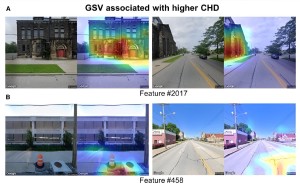pte20240328024 Medical/Health, Technology/Digitalisation
According to a study by American cardiologists, the risk of disease decreases in green cities.
 |
|
Special features that can get dangerous (Image: Google Street View) |
Cleveland (pte024/28.03.2024/13:30)
The arrangement, type, and condition of buildings, green spaces, sidewalks, and streets in cities have a direct correlation with the risk of people suffering from heart attacks. This is the surprising conclusion of Sadir al-Kindi's trial Heart and Vascular Clinic The Case Western Reserve University and his colleague Sanjay Rajagopalan. Using Google Street View, the researchers were able to predict with 63 percent certainty the risks posed by the respective residential area.
Environmental risk factors were studied
A heart attack, in which fatty substances build up in the coronary arteries and interrupt blood supply, is one of the most common forms of heart disease. According to the researchers, the use of Google Street View will help provide an overview of the physical environmental risk factors in built and natural environments, which will not only help to understand the risk factors in these environments, but ultimately lead to construction or redevelopment of cities to make them healthier habitats.
“We've always been interested in how both built and natural environments affect cardiovascular disease,” says Rajagopalan. “In the US, they say zip code is a better predictor of heart disease than individual health data. But it's not easy to figure out how the environment affects people's health. So we used machine image analysis to find links between the built environment and the incidence of coronary heart disease in US cities.”
Green spaces are good for health
Researchers compared half a million Google Street View images from seven US cities with the frequency of heart attacks there. It was shown that hazards can often be identified from certain characteristics of the living environment. For example, they associated green spaces and less frequented streets with a lower risk of disease, while streets with potholes indicated a higher risk.
“Given the challenges posed by climate change and demographic changes, there is an urgent need to understand the impact of urban environments on health using computer vision approaches that can provide unprecedented levels of fine detail,” concludes Rajagopalan.
(result)
